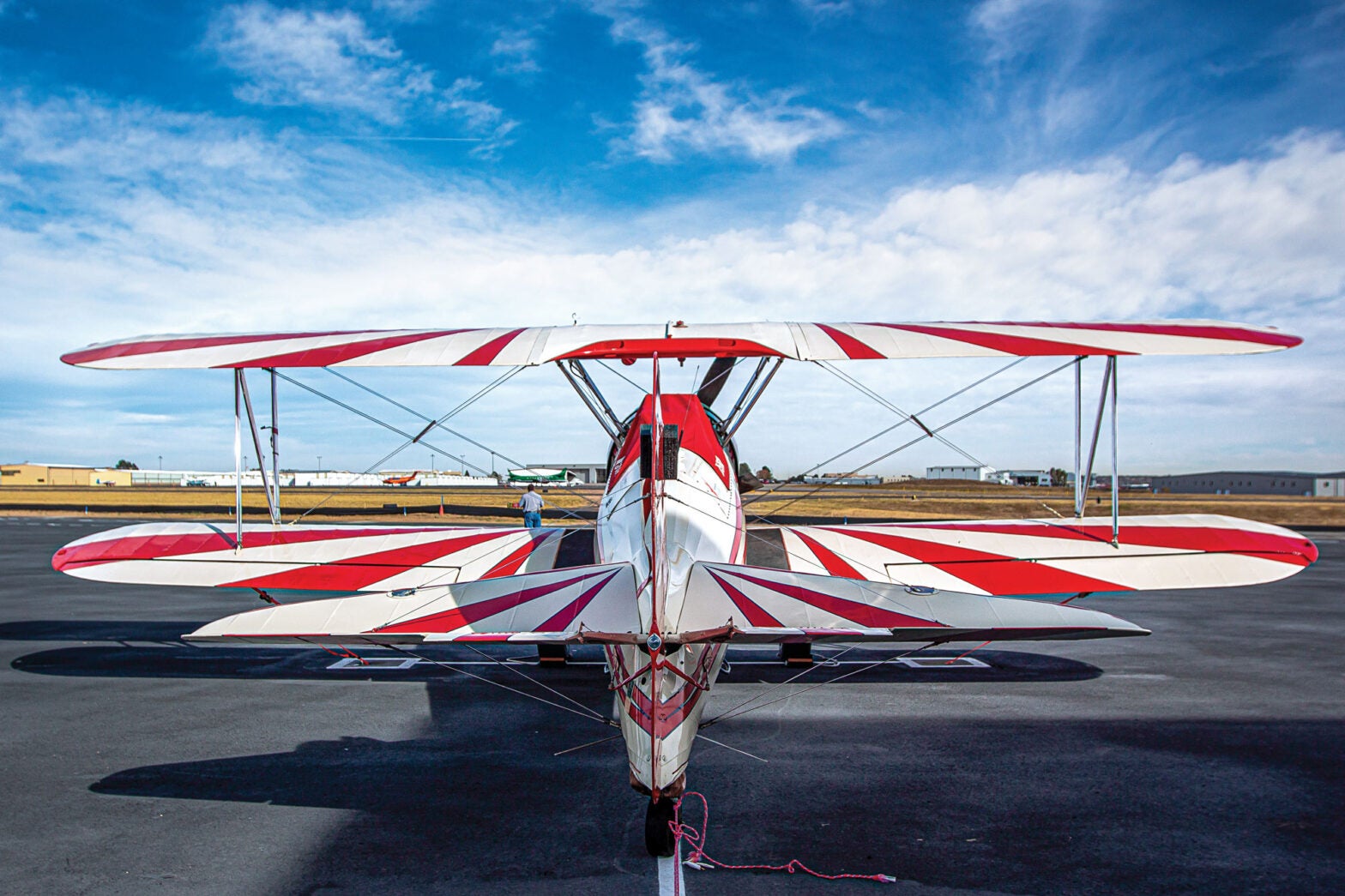If the basics of airmanship still apply in safely controlling an airplane—coordinated maneuvers, power-and-speed management, and situational awareness, for example—wouldn’t the methods to deliver those skills to new pilots remain anchored in fundamental truths as well?
Redbird Flight Simulations launched in 2006 with the idea that this is not necessarily the case—and pursued development of a line of full-motion aviation training devices and other products priced for the flight school market to help prove the point. For the past 10 years, the company has hosted an annual conference—Redbird Migration—for the flight training industry, to assist both flight schools and the educators who deliver training in understanding that there’s a new world out there.
But instructors learn in their initial coursework that education doesn’t occur unless there is good communication, and a certain amount of mutual buy-in has to take place before a message comes through and is understood. That’s why training tends to lag behind the technology; it’s much easier to fall back on the “good old ways” when an instructor is trying at the same time to understand the new equipment. This is true of initial pilot training as well as that for advanced certificates and transitions to high-performance, complex and turbine aircraft.
Members of the Flying team have attended Migration over the years—and (full disclosure) I was managing the Cessna Pilot Center program and participated when it first launched 10 years ago. I returned in October 2019 to the event at the Wings Over the Rockies Air and Space Museum’s “Boeing Blue Sky Aviation Gallery” to see how the conference had developed and if any change has taken place among those who participate.
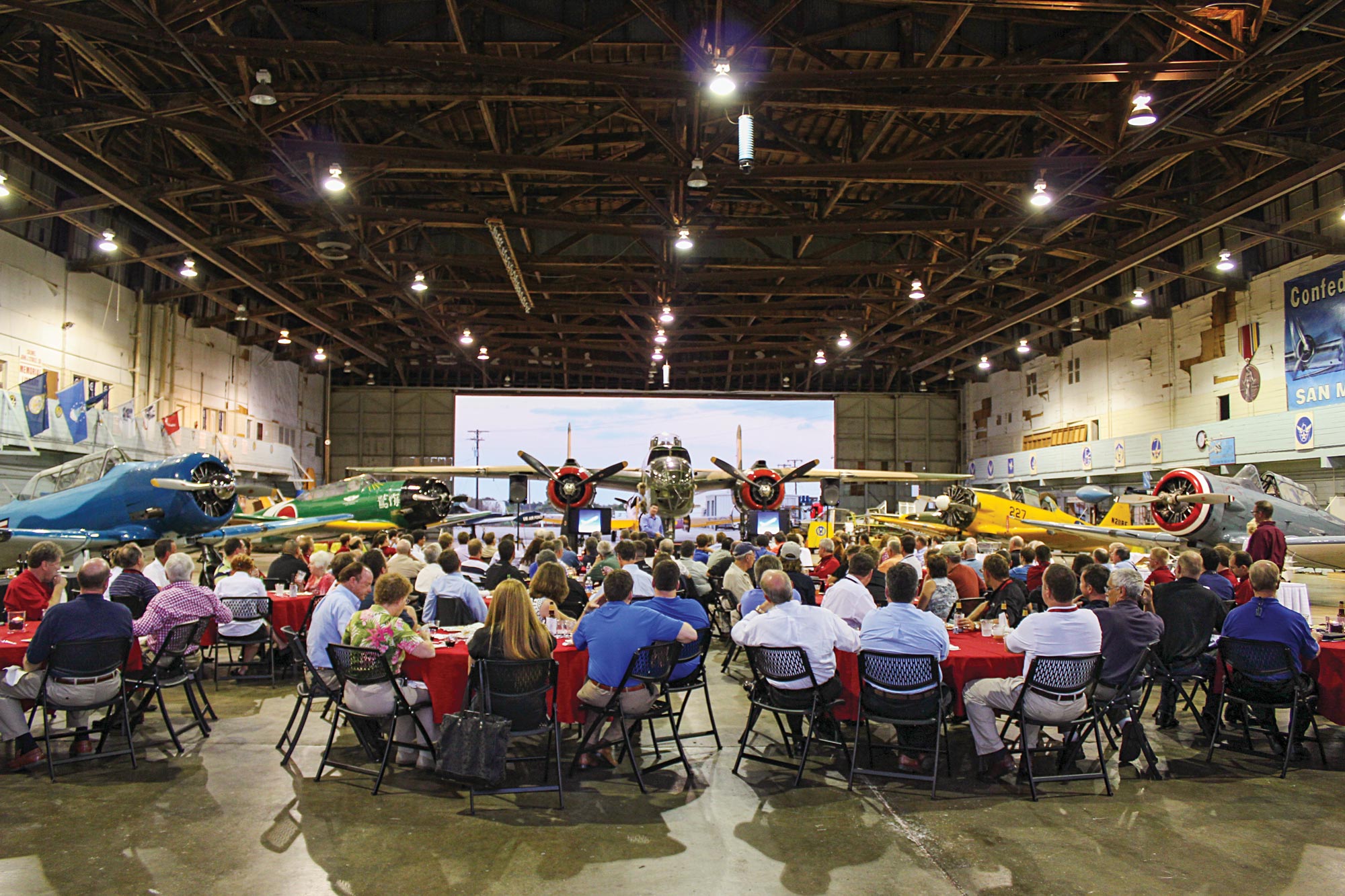
The structure of the conference has evolved over the past decade to bring new ways of teaching to light. What began as a series of presentations involving the entire group—at first, a little more than a hundred folks—quickly developed into a format of keynote speakers and breakout sessions, punctuated by social events and the Aircraft Owners and Pilots Association 2019 Flight Training Awards. The variety and timing of forums allowed participants to choose the topic areas they wanted to explore. While a handful centered directly around new Redbird products—and those of other partners—others took a look at integrating flight simulation into training curricula and how to develop flight instructors. These themes continue in Migration’s current state—meaning we haven’t licked these core issues yet. In 2019, more than 300 registered for the event, showing steady growth and a desire to keep after the change.
Over the years, Redbird has tested the utility of introducing maneuvers, procedures and concepts in the sim—as has just about every other major simulation manufacturer in the general aviation industry. It remains a challenge to get this message across to flight school owners and students, and it’s particularly sticky to impart to instructors. Why is that?
Perhaps the standard flight training device in residence at an average flight school in the United States over the past two decades hasn’t been optimal for teaching procedures, giving negative transfer in some cases—where the vagaries of the device impede good learning. That’s changed, however, with current devices focused on the flight school market—whether from Frasca International Inc., Elite Simulation Solutions or Flight1 Software, to name a few—which replicate so closely the true flight environment.
What’s more persistent, however, is an instructor’s default bias to the airplane. The instructor might be building time toward a career move to the airlines, or perhaps he or she is a seasoned professional who feels more comfortable teaching in the airplane—because that’s the way it’s always been done.
It’s this bias that needs to change.
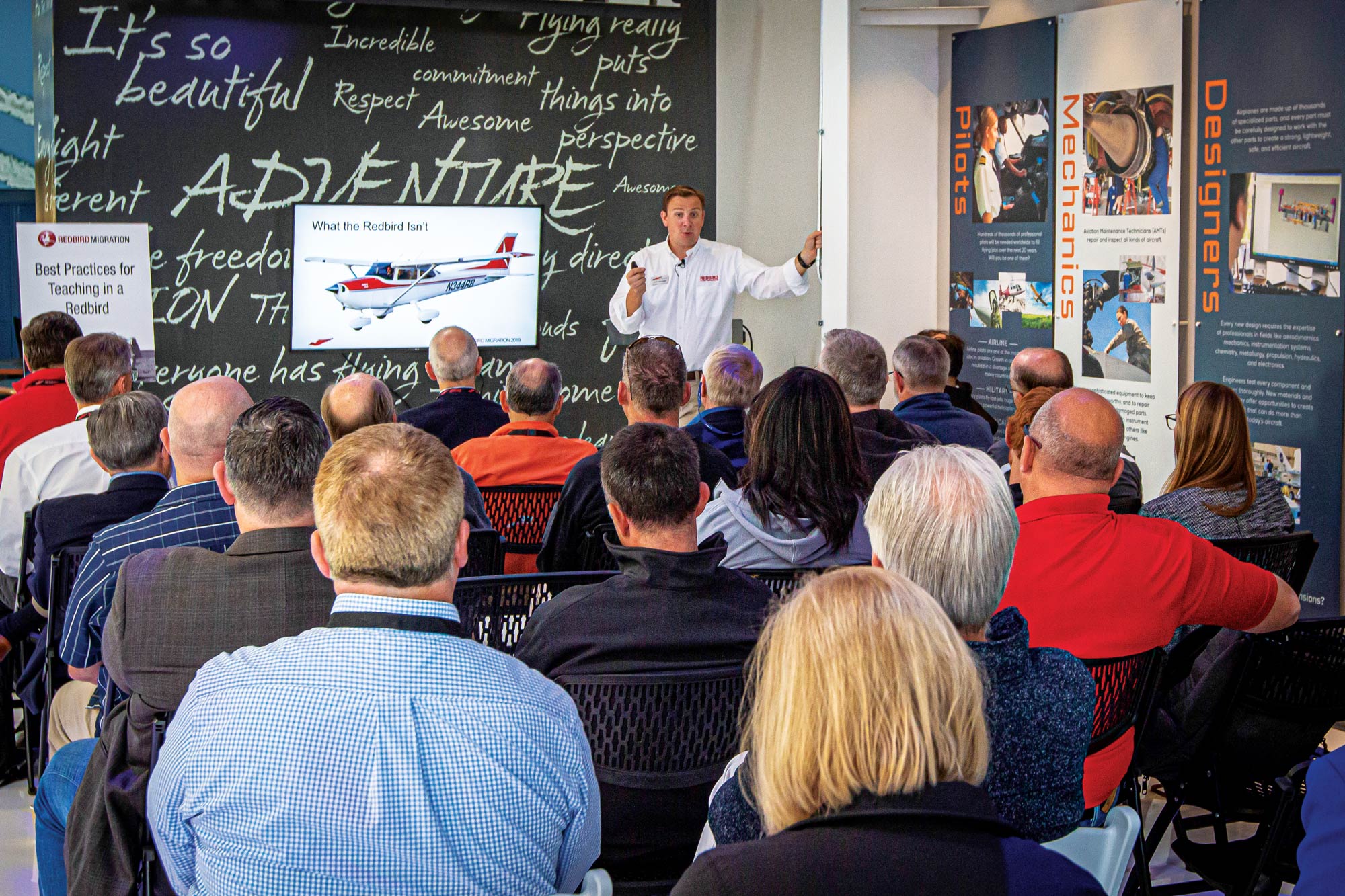
Forums for the Future
Jerry Gregoire, founder of Redbird, gives the rationale behind the event’s genesis and why it’s important to the company. “The Migration event, particularly the first one, was a reaction to the huge decline in investment the major aircraft manufacturers were making in flight training at the time,” he says. “Cessna, for example, gutted the [Cessna Pilot Center] program to the point where the annual/regional CPC meetings were no longer funded. The first Migration was our effort to keep the CPC meetings going.
“Over the next couple of years, Cessna [and then Textron Aviation] declined to participate in Migration, but by that time, Migration had established itself as the largest and, for the most part, only formal gathering of the flight training industry. In the process, it has become the most effective vehicle for flight school operators to influence the direction of regulation, aircraft, service and technology. The value to Redbird Flight Simulations has been immeasurable as a way to stay in close contact with the challenges and immediate needs of training providers…and the social and networking aspects are great fun for us.”
Those are just a handful of the reasons Redbird has opened Migration to nearly anyone in the flight training profession and makes it free to attend, though it began specifically tuned to flight schools—starting with those within the CPC program but quickly branching out—that sought to attain or maintain a certain standard of training. These star schools were viewed as the best places to begin to foment change.
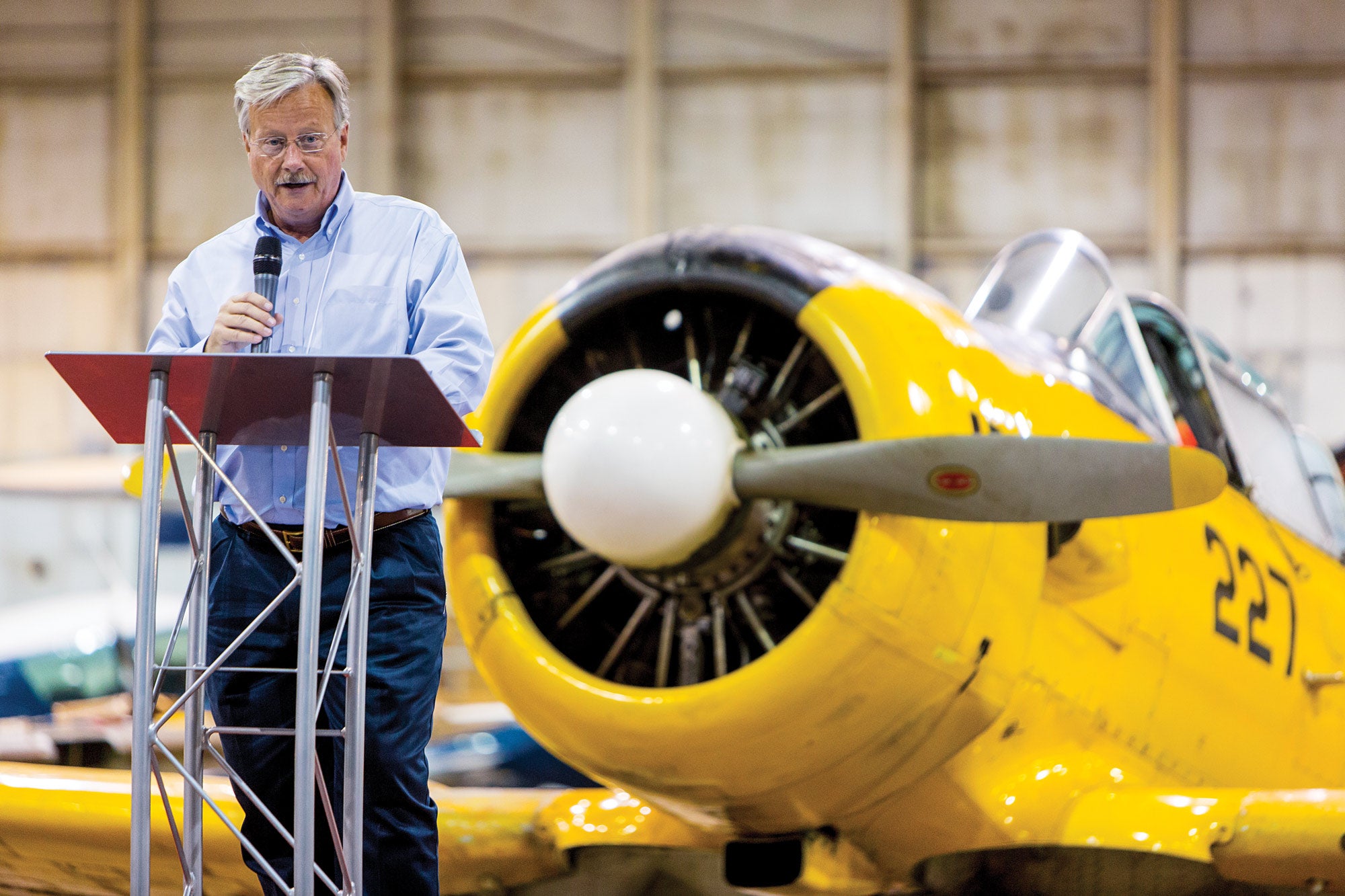
Eric Crump, the aerospace program director at Polk State College in Lakeland, Florida, has been with Migration since the beginning. “I think of Redbird as being the classic case for disruption in the industry,” he says. “No one had seen a sim [made for general aviation] that moved at that price point.” When Redbird entered the industry, reflects Crump, its modus operandi was to continually ask the question, “Why are we doing it this way?” and come up with a better answer. “To me, that’s what Migration is too: the tip of the disruption iceberg.”
The unique part of the conference lies in its ability to bring folks together who normally wouldn’t share airspace except under duress. “You get people in the room who should not want to share with each other because they are competitors,” Crump says. Not only would competing flight schools join in but so would representatives from various developers of pilot training materials. When a program continues for 10 years, you begin to see real adoption of new ideas, which are now percolating through the industry.
In the 2019 conference, Crump led a presentation during the forums several times to a standing-room-only crowd. His topic? “How To Build a Better Instructor.” Through real-time polling, he marched through a series of disruptive ideas on how to guide instructors to be better—and do better. “I’m a big advocate for completely rethinking the role of the flight instructor. It has to be different now,” he says. “Initial pass rates at the regionals have plummeted and retraining costs have gone up. This is a passion project for me. I’m invested professionally and personally. If we don’t fix our flight instructor problem, we’ll be totally ill-equipped to address [urban air mobility] and the other issues confronting us.”
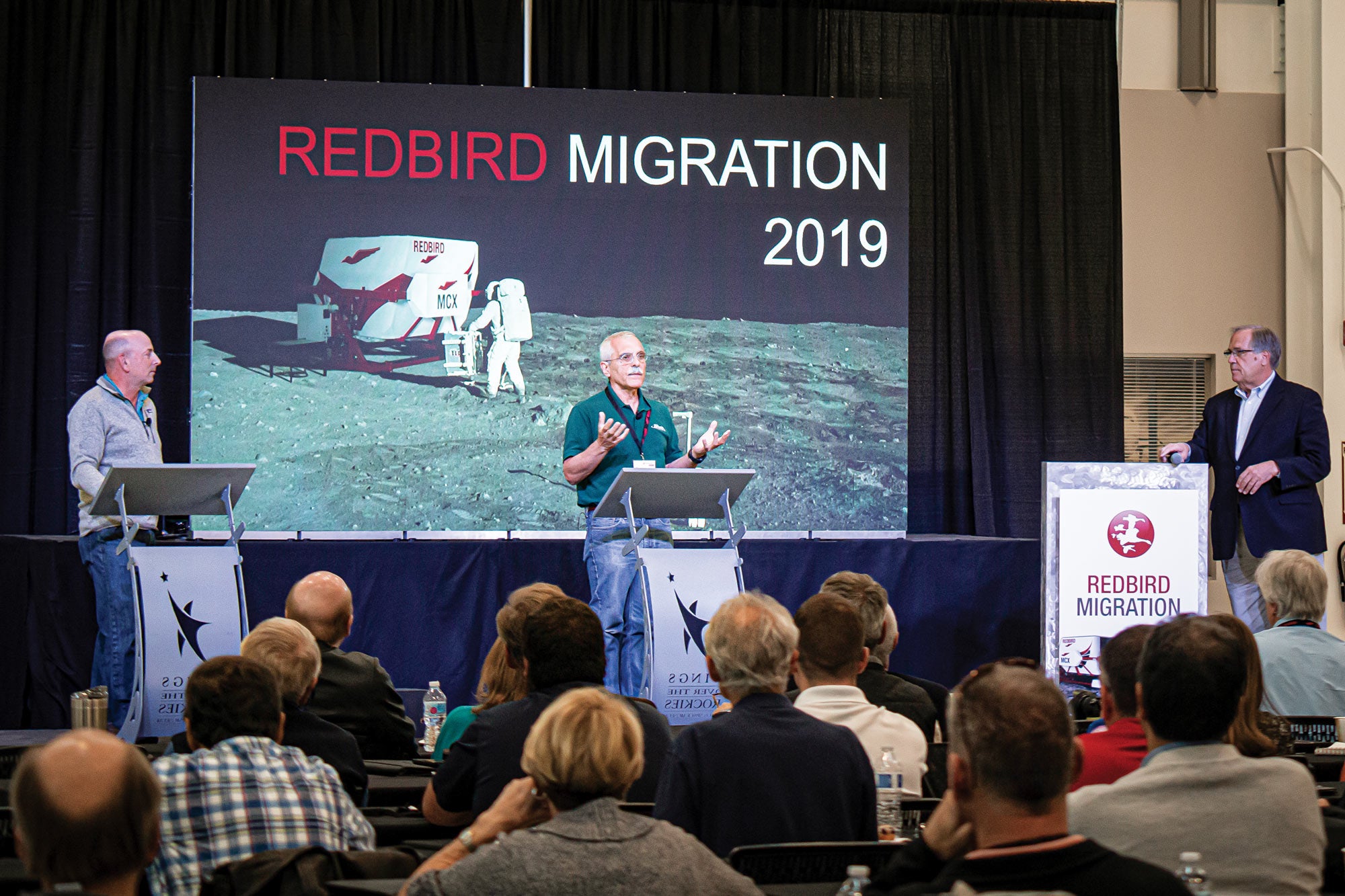
Building Engagement
So how do you get a hangar full of natural frenemies to open up about their hopes for the future? Engage them with the latest challenges—and give them a peek into new projects from innovative minds willing to take risks in order to save that future.
The Redbird Migration Challenge had its roots as another component of Migration during the very first year, in the midst of a crosswind-landing contest using one of the Redbird sims. A motley mob of instructors crowded around one of their fellow CFIs trying to land the crosswind sim, and they induced a “realistic level of distraction” by throwing pingpong balls at the poor soul—and having way too much fun doing it not to suspect a certain amount of deviant pathology in the group. Were those ball throws cathartic? Or just silly fun? Who knows—but the Challenge caught on as a way to drive engagement and interaction within the conference.
Migration Challenges over the years have included teams vying to create the best “Learn to Fly” video, as well as the Whizzie Marketing Challenge selling Big Red soda. In 2019, randomly selected teams were given the task of flight planning an epic journey from Earth to the moon—Earth, Texas, to Moon Township, Pennsylvania, that is—using no less than three aircraft and somehow covering the total mileage from planet Earth to the moon and in the same length of time as the Apollo 11 mission. Very few other parameters were granted to the teams, and as usual, the most creative answers won, even if they broke the rules.
Why do this? To get people to think differently and take the “rules” as guidelines rather than restrictions—when appropriate.
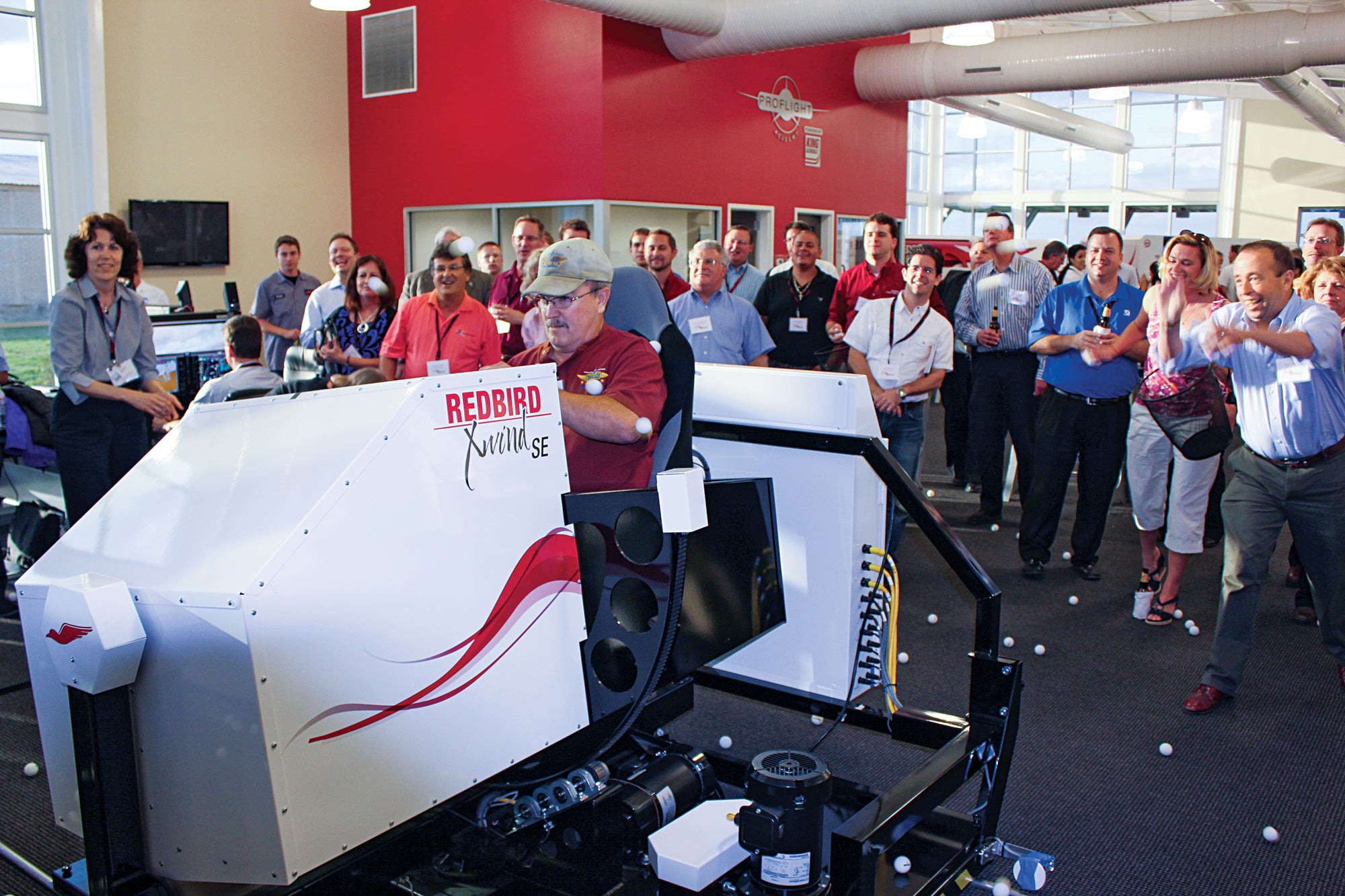
Takeaways for Educators—and Pilots
The most-telling results from the forums in 2019’s event came out of two questions that were posed in different ways over the course of the three days.
The first question, raised to the instructors in the forums, turns a common assumption on its ear: What happens if you charge less for flight instruction hours than you do for one-on-one ground instruction time?
On of the arguments given as the basis for the question: Most of the revenue in flight training is made in the aircraft-rental rate, percentagewise—if the school has its equipment priced correctly and managed well from a maintenance standpoint. When Crump presented this idea to one of the forums, he found a mixed response but enough consideration in the room to make it worth thinking through.
The second question: Should we be spending time in lengthy one-on-one ground lessons with an instructor at all?
Longtime CFI and designated pilot examiner Roger Sharp posed the question first during his keynote speech, to which he immediately answered for himself: a resounding no. His argument? Most instructors are not well-trained on delivering ground instruction and take far more time to cover the territory than a well-constructed ground-training course available digitally or in print from a variety of competent commercial providers. Of course, several of those same providers were in the audience at Migration and sagely nodded their heads in agreement, but he had a point—and one that hasn’t been discussed much. Why should instructors spend that time doing what they do least competently when a course may do it more thoroughly and efficiently?
Though no resolution was reached, the questions clearly prompted a lot of discussion. Maybe a few flight school owners in the audience (or reading these words) will try out the concepts and find if these are two assumptions—such as Redbird’s original quest to bring motion simulation to a lower price point—that can be dramatically changed.
This story appeared in the Jan/Feb 2020 issue of Flying Magazine
